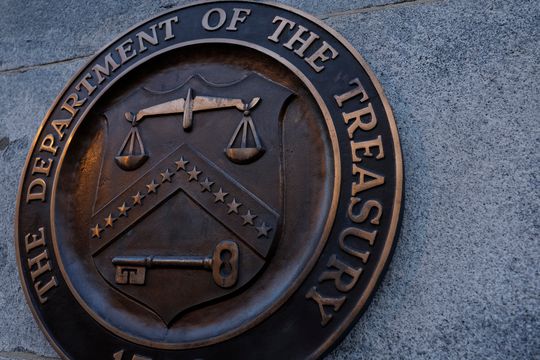The U.S. Treasury Department began taking “extraordinary measures” on Thursday to keep the federal government current on its bills, while giving Congress more time to come up with a debt ceiling deal.
Those special measures allow the Treasury to keep paying its bills, including paying holders of government debt what they are due, while also, for now, continuing the issuance of bills and notes as scheduled in the near $24 trillion Treasury market, the world’s biggest debt market, to replace maturing debt.
“There’s constant maturities and constant new issuance,” said Jim Vogel, an interest-rate strategist at FHN Financial, in an interview Thursday. “Until the Treasury calls a halt to auctions they go on as normal.”
In part, new note auctions on deck will replace maturing bonds issued years ago, which should help give confidence to investors that the U.S. government intends to fully repay principal and interest, as promised. It also helps bide time for Congress to strike a deal to increase or suspend the existing debt limit.
“Your early warning system is when 6-month bills get cheaper,” Vogel said, adding that a wobble in that part of the Treasury market could signal worries by investors that top lawmakers could fail to reach a debt ceiling deal by this summer, which could then raise the threat level of a U.S. government default.
What’s next in the U.S. debt limit standoff
The U.S. debt limit was first set in 1917, and already has been increased or suspended 102 times since World War II, according to David Kelly, chief global strategist at JP Morgan Funds, in a recent client note.
The government had been approaching its current debt limit of $31.385 trillion, prompting Treasury Secretary Janet Yellen on Thursday to deploy special measures to keep the government current on its bills, including making payments to bondholders, in moves she outlined a week ago.
Kelly said the Treasury has leeway to make adjustments to postpone “our real rendezvous with disaster” potentially until June, but that from an economic and financial perspective a U.S. default would be “an unmitigated disaster.”
Tax payments due to the U.S. government from corporations and households this spring also factor into the bigger debt-limit picture, while also influencing the final deadline for Congress to avoid an default on America’s debt.
“We are coming up to the March corporate tax day,” said Steven Ricchiuto, U.S. chief economist at Mizuho Securities, by phone Thursday. “That could boost the Treasury’s balances,” he said, while also noting the influx from taxes last was higher than anticipated.
Why investors are focusing on the debt ceiling now
With the ultimate showdown likely months away there are no discernible ripples in financial markets right now, but investors and analysts do seem to be paying much closer attention to the threat at a much earlier date than in past episodes, market watchers said.
Blame the intraparty battle between House Republicans that saw Kevin McCarthy elected speaker on Jan. 7 after a historic 15 ballots – and only after agreeing to a series of concessions to a small group of far-right conservatives.
Investors are “talking about it early because it came on the heels of a very difficult election of the speaker of the House and the sense that there’s now much more leverage that a few members of Congress may have to force this crisis that’s more likely to hit later in the summer,” said Christopher Smart, chief global strategist at Barings and head of the Barings Investment Institute, in a phone interview.
Some recent history underscores the concern. It took all of then-Speaker John Boehner’s political capital – “and then some” – to finally secure a vote among the Republican caucus on raising the debt limit during a similar showdown in 2011, Smart noted, observing that Boehner had “much more leeway” than McCarthy.
“So if there are five or more members who won’t vote” on raising the limit “without certain conditions being met,” it’s easy to imagine potentially ugly scenarios that could rattle markets, he said.
What’s at stake
Former Federal Reserve Bank of New York President Bill Dudley said Thursday in an interview with Bloomberg that a U.S. default would be a “huge blow” to markets, but also that a contingency plan exits if it happens.
“The way it works is if you actually run out of money, the Treasury will decide what payments to present to the Fed,” Dudley said. “Presumably, the Treasury will decide to prioritize debt repayment and interest payments, so there isn’t a technical default. The Fed will basically honor the payments the Treasury present.”
The Fed also could step in to shore up market functioning in the Treasury market, if needed.
“What we saw in 2011 is that the Treasury market got stronger until we got close to the deadline,” Dudley said. “People don’t want to buy Treasury bills that are maturing right around the time the debt limit could be binding.”
As a result of a 2011 debt-ceiling standoff, credit rating firm Standard & Poor’s downgraded the U.S. credit ratings to AA from AAA.
U.S. stocks declined for a third straight day on Thursday, with the Dow Jones Industrial Average DJIA, -0.76% losing 252.40 points, or 0.8%, while the S&P 500 SPX, -0.76% shed 0.8% and the Nasdaq Composite Index COMP, -0.96% dropped 1%.

